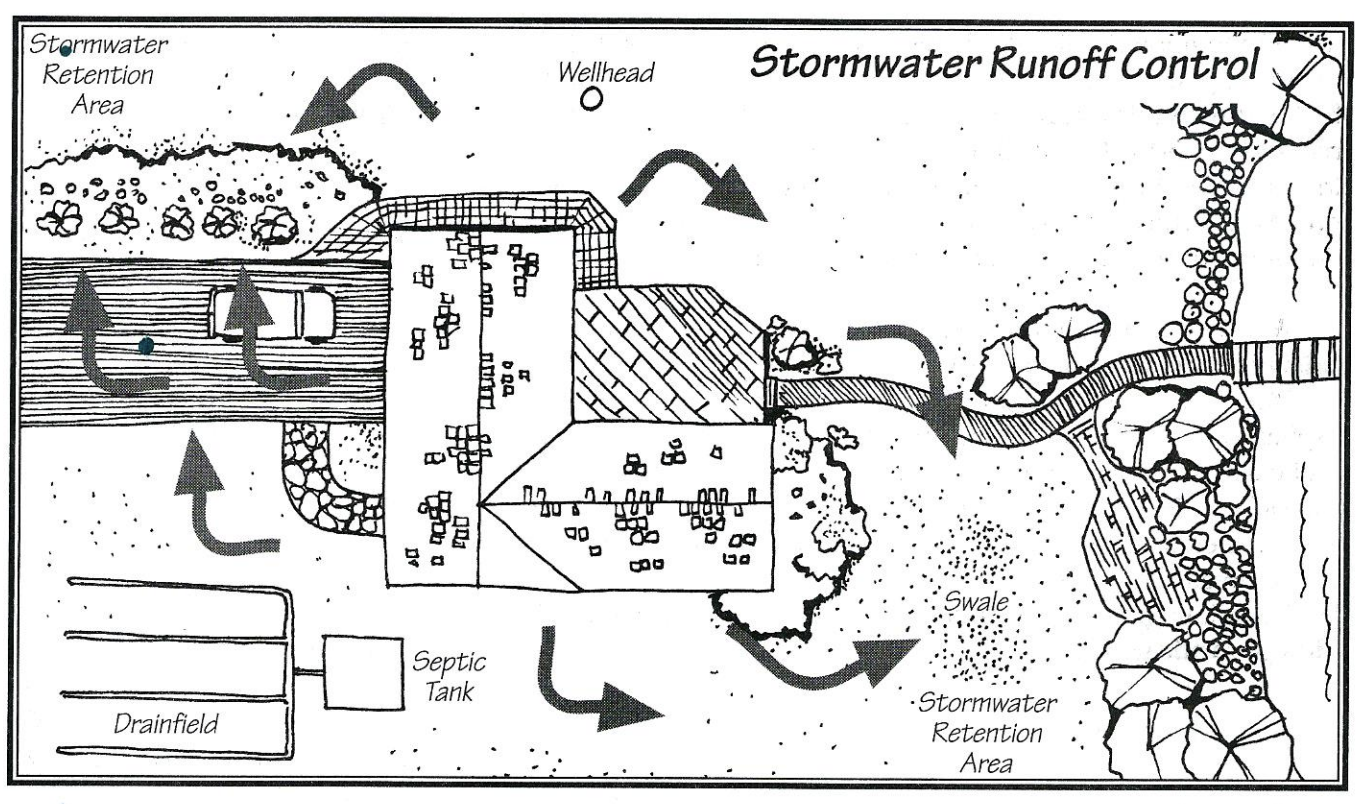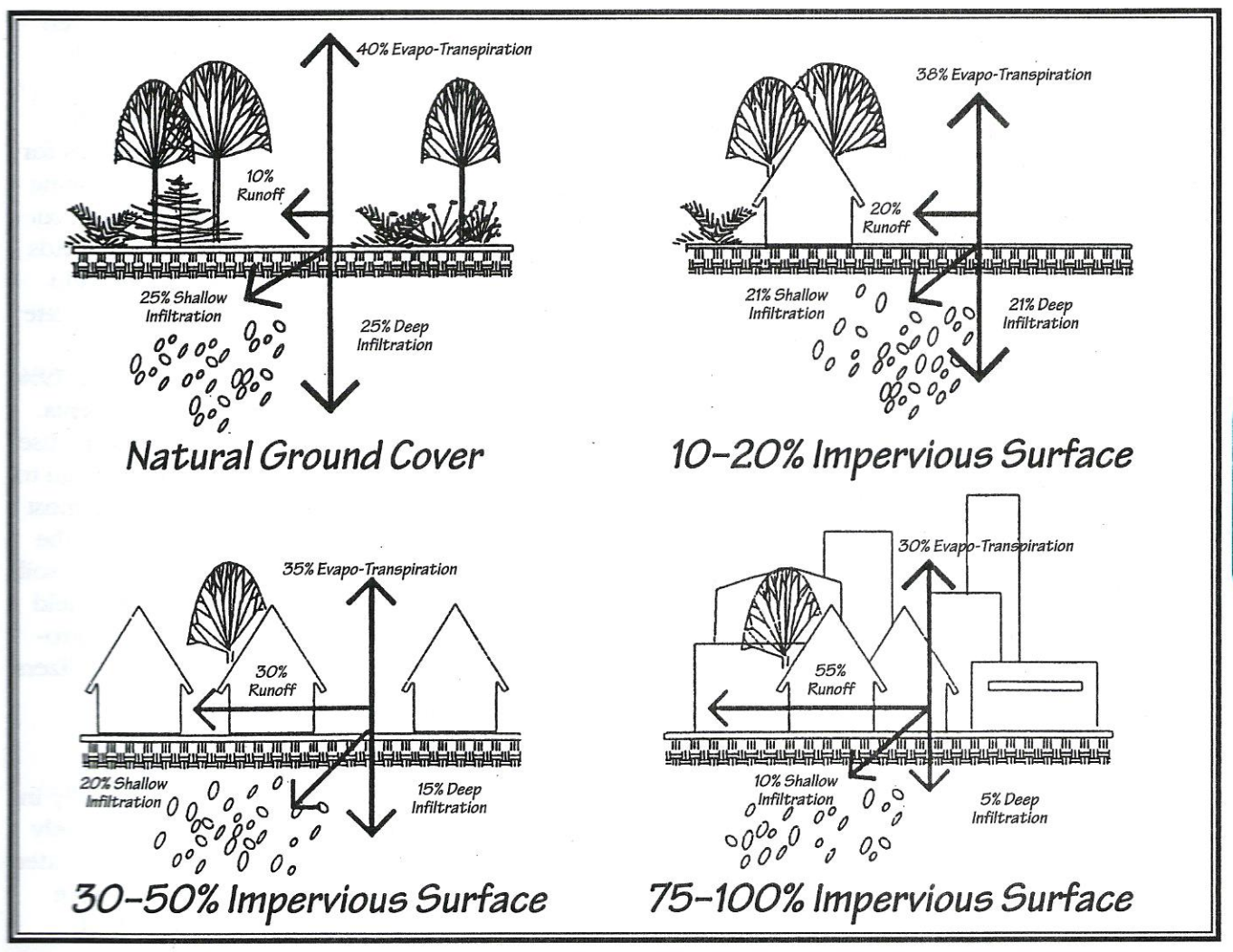impervious Surfaces and WATERSHED PROTECTION
The use of impervious surfaces and watershed protection go hand-in-hand. An impervious surfaces is any surface covering a developed landscape that blocks rainfall from soaking into the ground. Impervious surfaces could include roads, driveways, sidewalks, patios, decks, and rooftops. These surfaces increase the amount and speed of stormwater runoff which pollutes nearby bodies of water.
IMPERVIOUS SURFACES DEGRADE WATER QUALITY
Control stormwater runoff to protect the watershed
Nothing could be worse for the watershed than allowing stormwater to flow into the lakes, streams, and rivers. Stormwater runoff carries sediment and nutrients which can be detrimental to water quality.
During rain storms, stormwater flows across impervious surfaces. As it accumulates, it gathers loose particles from the ground, including excess nutrients, sediment, and toxic chemicals. When the stormwater runoff slows, these particles drop out of the waterflow and remain in place—possibly in our lakes and streams. It is important to slow stormwater runoff down before these pollutants can reach the surface water.
The illustration above depicts what happens as the proportion of impervious materials covering the surface area of the property increases. Consider how much of your property’s surface area is covered by greenery. If it’s not green, chances are it’s impervious. Research studies show that watersheds with as little as 10% impervious cover will begin to show the first stages of lake and stream degradation. Once this percentage reaches 20-30%, fish habitat, aquatic life, and water quality are dramatically impacted for the worse.
Green keeps the water clean!
3 tips for managing stormwater runoff
Help preserve water quality by using these best practices
Choose Porous Materials
Concrete and sealed asphalt are impervious surfaces that gather, concentrate, and accelerate rainwater runoff and exacerbate erosion problems. Whenever possible, choose a porous hardscape material instead of concrete or sealed asphalt. Porous materials, such as wood decking, concrete lattice pavers, brick and unsealed asphalt, allow rainwater to permeate the ground.
Control and Direct Stormwater Runoff
Control and direct stormwater runoff to areas where it will filter through grass or other vegetation.
The arrows in the diagram indicate the general direction of stormwater runoff in a properly designed landscape. Note that the water runoff is steered away from the septic system and the wellhead, as excessive runoff can interfere with septic drainfield operation or introduce contaminants into well water. This plan establishes two stormwater retention areas designed to temporarily “store” runoff: (1) a swale, or depression, in the lawn behind the shoreline green buffer and (2) a border garden beside the driveway planted with hardy native perennials that tolerate occasional flooding. In addition, the patios and walkways are constructed of porous materials to further inhibit the collection of runoff.

Design a Stormwater Runoff Handling System
If needed, design a stormwater runoff handling system for your property.
First, slow runoff by replacing concrete or asphalt channels with grass-lined ditches. Then, set up a drainage pattern which directs flow into an area where the runoff can harmlessly collect and temporarily flood. This is called a retention pond. The retention pond should lie on a porous substrate (such as sand) and be lined with thick vegetation. The water in the retention pond will soak slowly into the ground where most of the nutrients will get filtered out before it can work its way to the lakes or river.
An overflow pipe can also help protect adjacent areas or buildings from flooding during times of extraordinary run-off.






